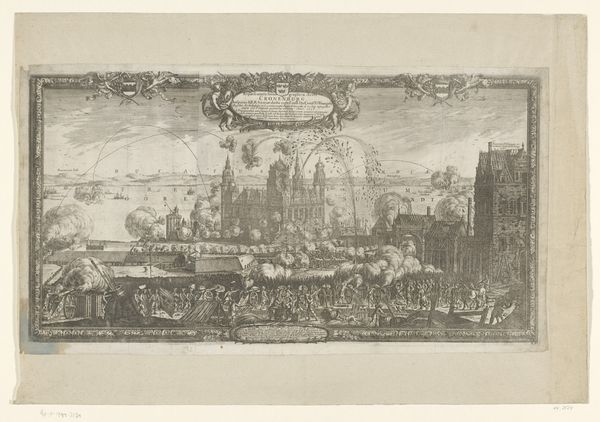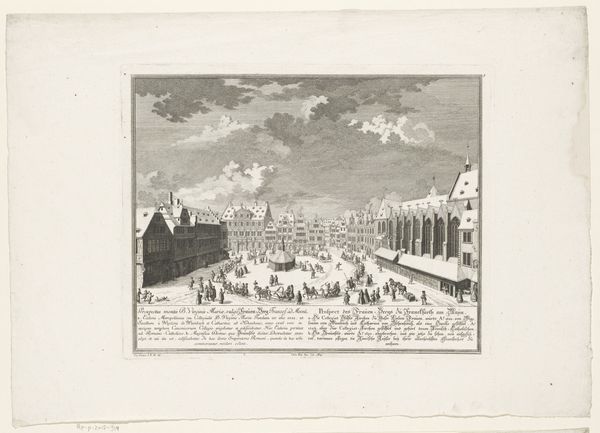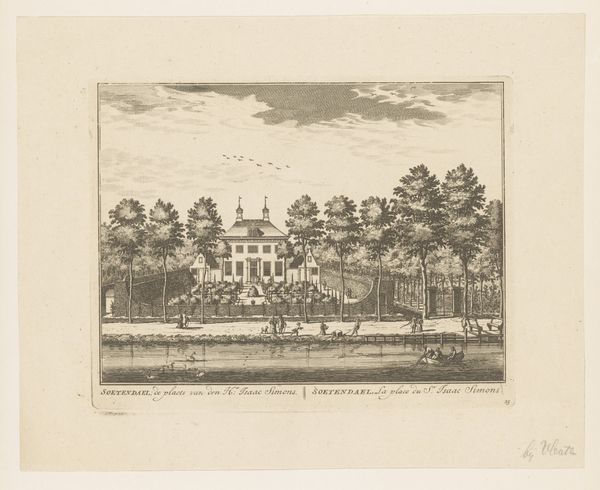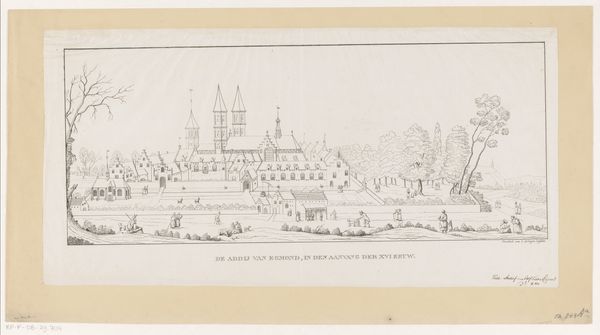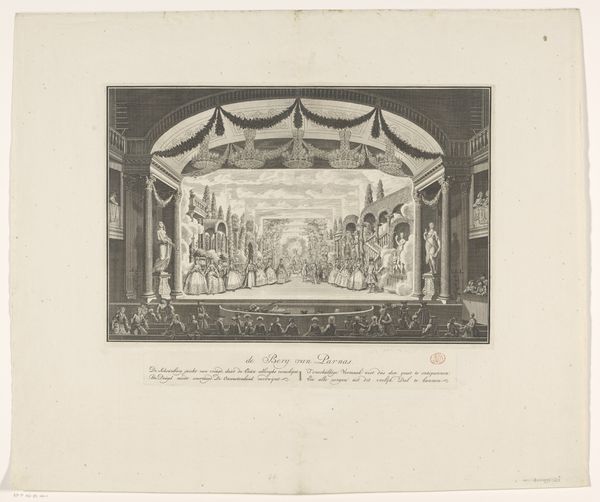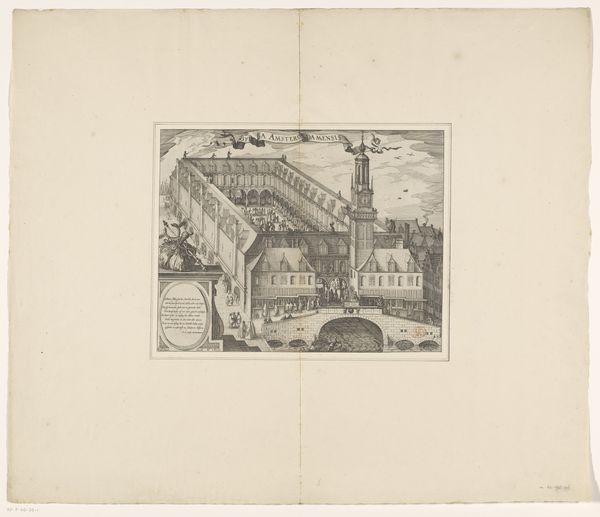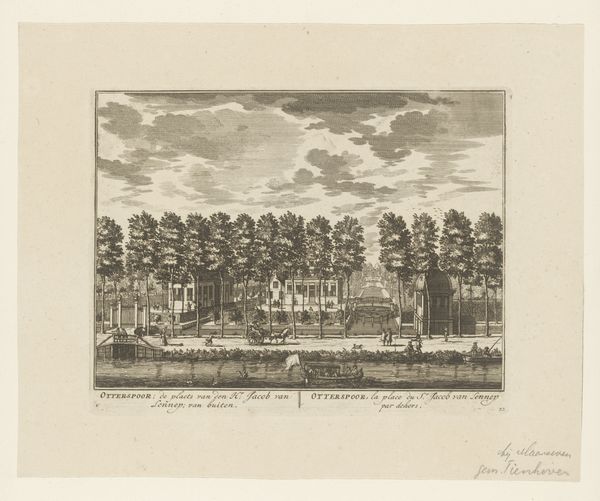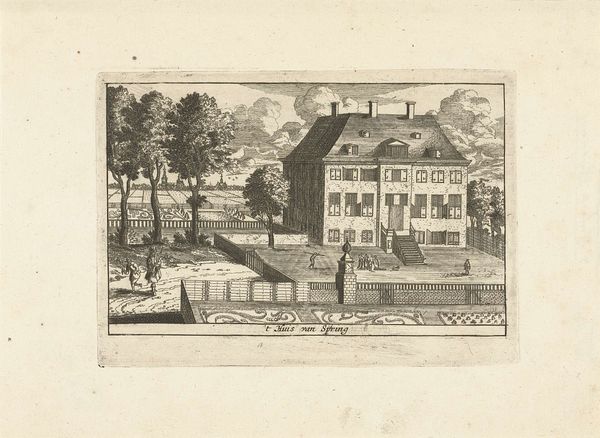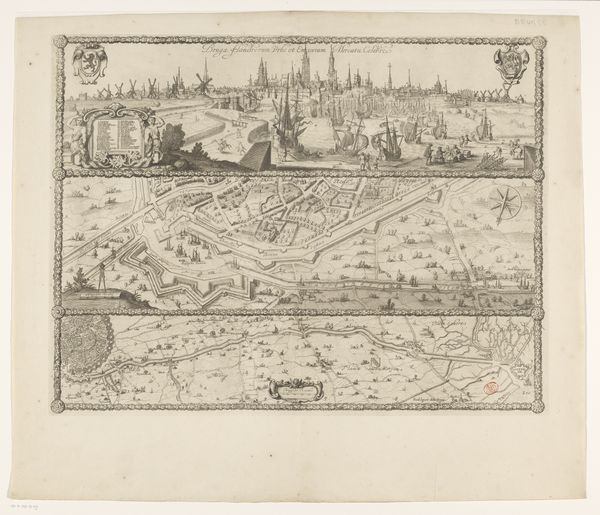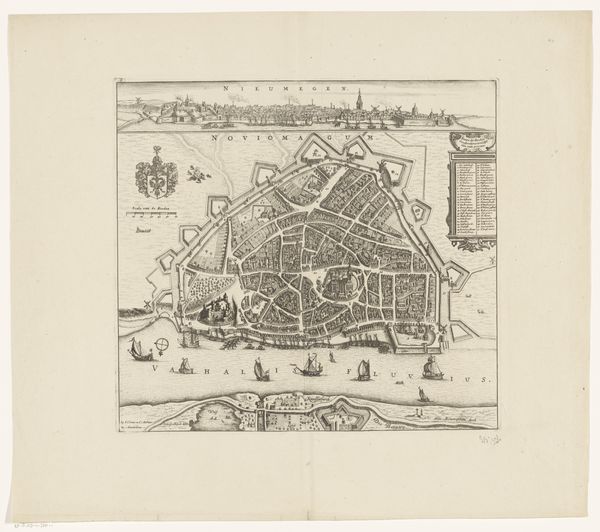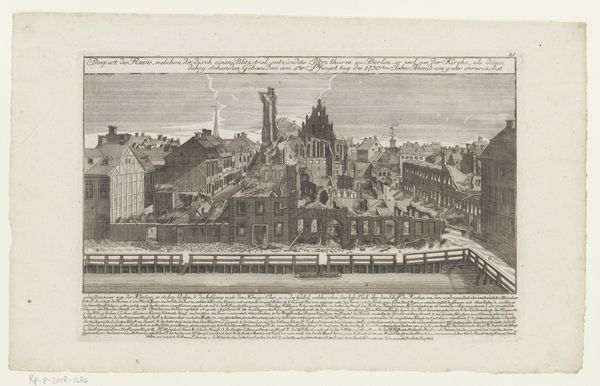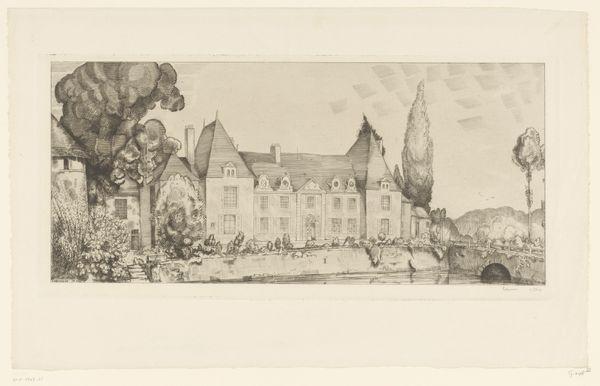
print, etching, engraving
#
baroque
#
dutch-golden-age
# print
#
etching
#
landscape
#
etching
#
figuration
#
line
#
cityscape
#
genre-painting
#
engraving
Dimensions: height 203 mm, width 590 mm
Copyright: Rijks Museum: Open Domain
Curator: This engraving, titled "Het Hof van Holland," meaning The Court of Holland, is estimated to have been created sometime between 1634 and 1750, during the Dutch Golden Age. The artist remains anonymous. What are your initial thoughts? Editor: My eye is immediately drawn to the playfulness, the sheer vitality of it. Look at how the figures populate the scene; children playing, adults conversing. There is such everyday humanity here. Curator: Precisely. This is not just a depiction of a place but an insight into a specific moment in its history and culture. You have the physical structures—buildings, landscape—but then you have this vibrant interaction. How might you interpret these interactions in the context of 17th-century Dutch society? Editor: Well, the details become significant. The architecture is solid, hinting at a structured, ordered society. But the children, dominating the foreground, are a burst of carefree energy. I’d suggest it mirrors the duality of the time: growing stability alongside a new, almost rebellious freedom of expression and commerce. Curator: And let’s not forget the placement of the 'Hof,' or court, itself. In the background, almost overseeing this vibrant, boisterous foreground. Its placement raises a question of power and who this print might have been intended for, especially within a context of increased national identity. Editor: The title itself, "The Court of Holland," is significant. The court, in many ways, serves as a symbol of both national and personal aspiration. People want to see themselves represented within that power structure, and images like this contribute to that desire and maybe even a perceived accessibility to power. Curator: I agree. This is a genre scene that speaks volumes about the negotiation of social values and individual freedoms. It invites viewers, even centuries later, to examine how society shapes identity and vice versa. Editor: Absolutely. A deceptively simple image reveals layers upon layers of social meaning. Curator: Seeing the work this way offers insights beyond simply the documentation of buildings and the past. It prompts me to reconsider the relationship between power and the people in today’s world. Editor: Indeed, a lasting testament to the power of images to embody collective desires, even those of childhood joy.
Comments
No comments
Be the first to comment and join the conversation on the ultimate creative platform.
